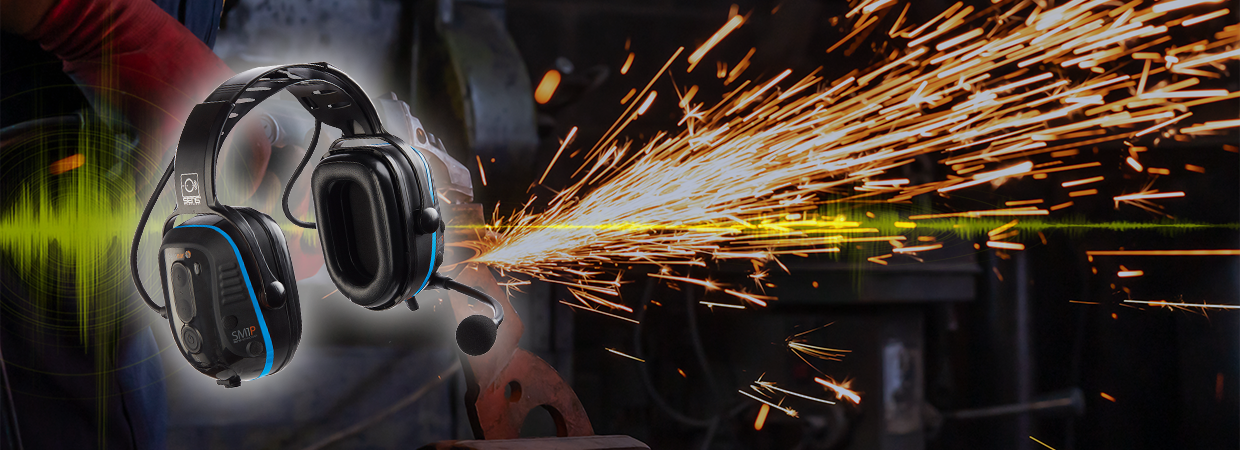- Home
- Blog
- Noise-Induced Hearing Loss
- What’s the Cost of Noise-Induced Hearing Loss for Steel Manufacturers?

What’s the Cost of Noise-Induced Hearing Loss for Steel Manufacturers?
As an Environmental Health & Safety Professional in the steel or metal fabrication industry, have you ever wondered about the financial burden of Noise-Induced Hearing Loss (NIHL)? A 2021 study by the National Institute for Occupational Safety and Health (NIOSH) found that the average payout for hearing loss claims in the U.S. is $45,000, with some settlements reaching millions. But beyond the financial cost, what are the risks to your workforce?
Have you researched your country or state’s statute of limitations for filing an NIHL claim? In Wisconsin, for example, former employees can file a claim for up to 12 years after their last day of employment—often years after they’ve retired. This delayed liability highlights the importance of proactive hearing protection.
Beyond Hearing Loss: Other Health Risks of Noise
High-noise environments like those in steel manufacturing present multiple health risks beyond hearing loss. Prolonged exposure to noise levels over 85 decibels (dB) not only impair hearing but also leads to elevated stress levels, high blood pressure, and increased workplace accidents. Studies have shown that workers exposed to high noise levels are more likely to develop hypertension. For instance, a study in India found that over 25% of workers exposed to excessive noise had elevated blood pressure.
The impacts of NIHL are far-reaching. In addition to hearing loss, noise can contribute to cardiovascular disease, fatigue, increased absenteeism, and reduced productivity. Safety is also compromised, as tired workers are more likely to make mistakes. In many ways, hearing loss is an “invisible injury.” As the saying goes, "Blindness is easy to see; deafness is invisible. Thus, hearing impairment is an unseen misery."
Noise Levels in the Steel Industry
The steel industry is a cornerstone of the global economy, supporting key sectors like construction, automotive, transportation, infrastructure, and machinery. Employing over 6 million people worldwide, the industry’s growth continues to thrive. However, this expansion comes at a cost: steelworkers are exposed to one of the noisiest work environments globally, regularly facing noise levels that far exceed safety limits. Equipment such as blast furnaces, compressors, and cranes produce noise levels as high as 110 dB(A), well above OSHA’s recommended safe limit of 85 dB(A). As a result, 33.5% of steelworkers suffer from Noise-Induced Hearing Loss (NIHL), highlighting the critical need for enhanced hearing protection and safety measures in this high-risk industry.
A 2019 study found that 80% of steelworkers had hearing loss at noise-sensitive frequencies, especially those working in the loudest areas of the plant. The risk of hearing loss increases with both the intensity of the noise and the length of exposure. Unfortunately, despite awareness of the risks, many steelworkers still face unprotected noise exposure daily.
Table 1: Noise Levels Within Steel Manufacturing
The Long-Term Impact of Noise Exposure
The World Health Organization (WHO) warns that exposure to noise levels above 85 dB(A) for 8 hours a day or 100 dB(A) for just 15 minutes can lead to permanent hearing loss. Steelworkers often encounter these conditions, with 28% of them regularly exposed to noise levels between 85-95 dB(A). It’s not just frontline workers who are affected—engineers, maintenance staff, and others working near the steel mills are also at risk.
Even if a worker isn’t directly operating noisy machinery, the ambient noise from steelmaking processes can make it nearly impossible to avoid harmful exposure. This is why implementing comprehensive hearing protection measures is so critical for everyone in the facility.
Mitigating Hearing Loss Risks in Steel Manufacturing
So, how can Environmental Health & Safety professionals mitigate these risks and protect workers from noise-induced hearing loss? One of the most effective ways is to ensure that employees use hearing protection devices from reputable manufacturers like Sensear.
Sensear offers a range of solutions, including Two-Way Radio and Bluetooth® wireless technology headsets and earplugs, powered by SENS® (Speech Enhancement – Noise Suppression) Technology. This cutting-edge technology amplifies speech while suppressing dangerous background noise, allowing workers to communicate effectively and stay safe in high-noise environments. With Sensear’s headsets, steelworkers can have clear conversations whether face-to-face, headset-to-headset (using license-free FM frequency short-range), or over two-way radios and Bluetooth® wireless technology enabled devices. This seamless communication significantly improves job site safety while protecting workers’ hearing.
Specialized Solutions for Extreme Noise
Steelworkers face some of the highest noise levels in any industry, which is why Sensear has designed specialized solutions to meet these challenges. For example:
- Double Protection Headsets: Sensear is the only manufacturer to integrate earplugs into earmuffs for workers exposed to noise levels above 95 dB(A).
- Intrinsically Safe Headsets: These headsets allow for safe communication in hazardous, potentially explosive environments.
- In-Ear Bone Conduction Headsets: Ideal for workers required to wear respirators, these headsets allow users to communicate clearly without compromising their safety equipment.
Sensear’s commitment to international safety standards ensures that its headsets provide the highest levels of protection and communication clarity in the most demanding environments.
Ensuring Compliance and Safety in Steel Manufacturing
Steel manufacturers must comply with stringent safety regulations, including noise control standards set by OSHA and other international bodies. Using Sensear headsets not only protects workers but also helps companies meet these regulatory requirements. In environments as loud and hazardous as steel mills, effective hearing protection is not just a safety measure—it’s a compliance necessity.
By investing in high-quality headsets that provide both hearing protection and communication support, companies can reduce the risk of hearing loss claims, improve worker productivity, and enhance overall workplace safety.
Enhancing Safety and Communication on the Job
Reducing noise exposure in steel manufacturing is only part of the solution. Workers also need to maintain situational awareness and clear communication to stay safe on the job. Sensear’s headsets deliver on both fronts, offering superior hearing protection without compromising communication. This allows workers to stay connected and aware of their surroundings, reducing the risk of accidents and improving operational efficiency.
Are you looking for ways to improve safety and communication in your steel manufacturing facility? Contact one of our high-noise specialists today to discover how our innovative solutions can make a tangible difference in your workplace. Sensear’s advanced technology, backed by a commitment to worker safety and compliance, offers the best in hearing protection and communication for high-noise environments. By prioritizing safety, you’re not only protecting your workers' hearing but also enhancing productivity and ensuring a safer, more efficient workplace.










